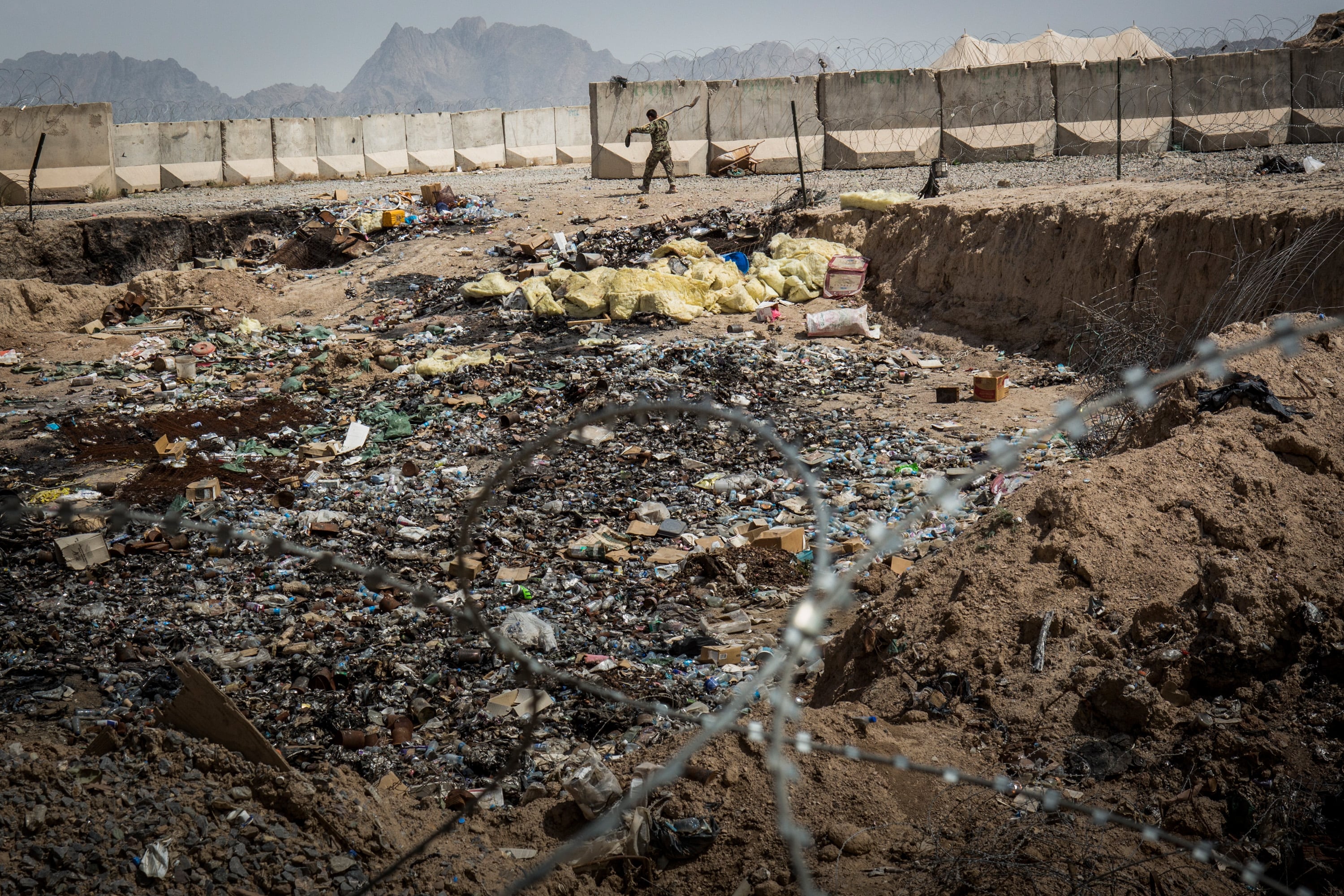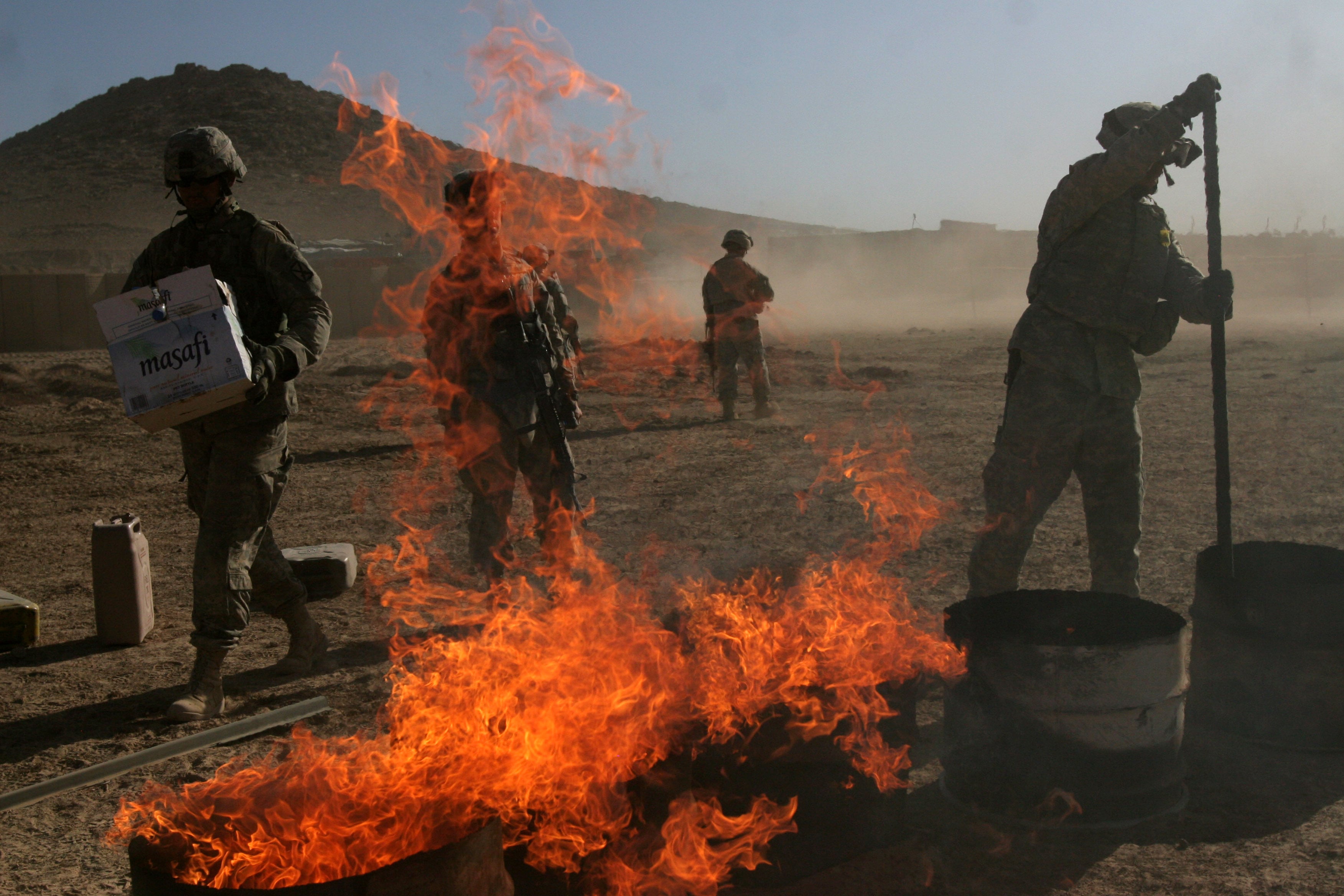A new medical study of military toxic exposure symptoms set to be published this month indicates that individuals who served around dangerous burn pit smoke may face a greater risk of mental health and brain trauma issues.
The research, conducted by the National Institutes of Health in conjunction with the Defense Department and Department of Veterans Affairs, analyzed the health records of nearly 440,000 troops who deployed to Iraq and Afghanistan from 2001 to 2011.
The findings show higher rates of depression, mood disorders, intracranial injuries and traumatic brain damage among troops stationed near toxic burn pits, giant waste fires used to dispose of a host of office and war zone surplus.
Researchers said the likelihood of injury increased as service members spent more time around the chemical-laden smoke.
“The wide array of toxic chemicals released during uncontrolled combustion in these pits may include chemicals that have deleterious neurobehavioral effects,” they wrote.
RELATED

For example, troops who lived near burn pit smoke for at least 129 days during their deployments were 27% more likely to report symptoms of severe stress than individuals at bases without the toxic smoke, and 37% more likely to suffer from any intracranial injury. Troops with more than 474 days near the burn pits were 68% more likely to report severe stress than deployed troops without the smoke exposure, and 124% more likely to develop intracranial wounds.
Sleep disorder issues were 18% higher for troops with four months near the pits and 35% higher for those who spent about 16 months nearby. All of the groups exposed to the toxic smoke were more likely to die by suicide.
Christian Hoover, a National Institutes of Health research fellow and one of the authors of the report, said the findings can’t prove that toxic smoke from the burn pits caused troops’ brain injuries and mental health issues, because the military never documented exactly what chemicals were in the air those individuals were breathing.
“But with this report, we’ve opened a book on a new set of questions,” he said. “We’ve got evidence that is pretty compelling saying that environmental exposures can cause additional problems we weren’t thinking about.”
The connection between war zone burn pit smoke and respiratory illnesses — including several rare and fatal cancers — has been established in recent years through scientific research and congressional legislation. In 2022, lawmakers adopted the PACT Act, which revamped how VA officials provide health care and benefits to individuals who lived around burn pit smoke, acknowledging the risks that created.
But Hoover said much of the research has been focused on visible, physical injuries like lung and respiratory tract damage, which are easier to see and diagnose. He hopes this study will draw attention to other, less researched negative health effects of the war zone airborne threats.
“This could open up a whole world of into how [toxic] exposure affects mental health and mental health treatments,” he said. “There is still a stigma associated with a number of these issues. This raises the question of whether there is a way to understand all of it as something happened to me, rather than through me.”
The full study is scheduled to be published in the Journal of Occupational and Environmental Medicine in the next few days.
Leo covers Congress, Veterans Affairs and the White House for Military Times. He has covered Washington, D.C. since 2004, focusing on military personnel and veterans policies. His work has earned numerous honors, including a 2009 Polk award, a 2010 National Headliner Award, the IAVA Leadership in Journalism award and the VFW News Media award.





